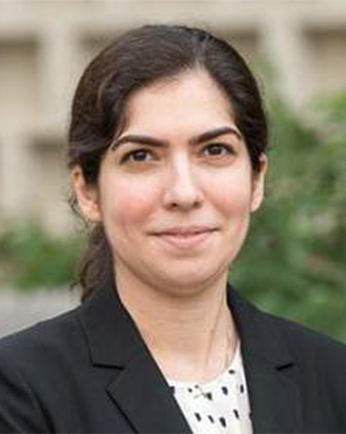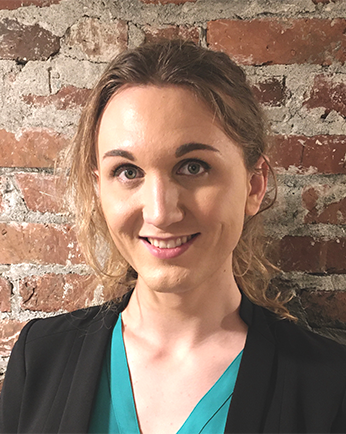Session Abstracts:
Session 7A

PhD Student
University of Florida
Presentation Title: Uncertainty quantification and guidance on the use of stochastic wind load models calibrated using wind tunnel experimental data
Co-Authors: Srinivasan Arunachalam; Arthriya Subgranon; Seymour M J Spencee
Abstract: Performance-based wind engineering (PBWE) frameworks allow for the explicit uncertainty propagation through the probabilistic performance assessment of wind-excited buildings. Such uncertainty can play a significant role in the structural response, especially for wind-sensitive structures. One crucial step in obtaining reliable wind-induced structural responses lies in the accurate simulation of multivariate wind load processes, which are an important source of uncertainty. Recent studies have explored the use of wind-tunnel-informed stochastic wind models as a powerful method to generate building-specific loads. Despite the advantages of data-informed models, there are still challenges in quantifying the errors associated with the effects of wind tunnel records variability and how such errors propagate to the response estimation. To this end, extensive wind tunnel datasets have been collected at the NHERI Boundary Layer Wind Tunnel on a rectangular model for various wind directions and experimental settings. The dataset was divided into two groups: one was used to define the target spectral functions, and the remaining data were divided into typical short-duration records as a testing set. Stochastic wind loads are generated using the newly implemented wind-tunnel-informed model on WE-UQ application from the SimCenter platform, and applied to an archetype building model to estimate structural responses. Uncertainty associated with a typical wind tunnel record, numerical model, mode truncation, as well as effects on structural responses are investigated. Results provide insights into the effects of wind load variability and the associated uncertainty necessary to be considered for reliable response estimation of wind-excited systems.

Senior Developer, NHERI SimCenter
University of California, Berkeley
Presentation Title: Database-enabled surrogate modeling to predict surface wind pressure statistics of two adjacent buildings
Co-Authors: Fei Ding; Alexandros Taflanidis; Ahsan Kareem
Abstract: Urban cities are vulnerable to the impact of dynamic wind effects including the interference effects resulting from the cluster of tall buildings undergoing complex interactions with their surrounding wind environment. Wind-induced interference effects have been studied through a series of wind tunnel experiments. To comprehensively understand the influence of the interfering factors on the pressure variations on the building surfaces, a Gaussian process model-based surrogate modeling approach is employed in this study and combined with principal component analysis to handle a high-dimensional output field. The surrogate model is capable of predicting the mean, standard deviation, and peaks of pressure coefficients across the building surface for different possible building arrangements. This surrogate model is trained through the wind tunnel dataset developed by Tokyo Polytechnic University (TPU). The sensitivity analysis is performed to identify critical domains where the local peak pressures are significantly affected by the building arrangements, incident wind directions, and height ratio. Additionally, the adaptive Design of Experiments (DoE) strategies are applied to efficiently guide the sequential design of wind tunnel tests, aiming at identifying the aerodynamically favorable and unfavorable wind scenarios and maximizing the information to train a surrogate model from a limited number of wind tunnel tests. The surrogate modeling is performed using quoFEM software developed in NHERI SimCenter.

Associate Professor
University of Michigan
Presentation Title: Hurricane damage estimation for clusters of buildings based on CFD simulations
Co-Authors: Sejin Kim; Fei Ding
Abstract: Hurricanes rank among the most expensive and destructive natural disasters, annually causing staggering costs to the United States. Over the past decade, extensive research has been conducted to develop engineering-based frameworks aimed at predicting community-level damage and resilience. These frameworks assist policymakers in making informed decisions to mitigate hurricane-related risks. The focus of the present study is to advance this field by introducing an enhanced framework for hurricane damage estimation. Two key enhancements distinguish our approach from existing frameworks. First, a more refined 3D building modeling was employed that incorporates detailed geometric data from Google Earth and machine learning-based image segmentation using BRAILS. This enhancement addresses a key limitation in earlier methodologies that relied on a restricted set of archetype buildings to represent communities. Second, Computational Fluid Dynamics (CFD) simulations were employed to account for the interference effect from surrounding buildings, allowing for a more realistic estimation of peak pressure coefficients. The efficacy of our proposed framework is demonstrated through a comparative study with existing methods, showcasing its potential for more accurate and comprehensive hurricane damage assessments.

Associate Professor
University at Buffalo
Presentation Title: Towards addressing the wildfire problem: Large-scale simulation of fire spread in communities
Co-Authors: Fernando Szasdi-Bardales; Neil Lareau; Timothy W. Juliano; Kasra Shamsaei; Matthew Roberts; Branko Kosovic; Hamed Ebrahimian; Ertugrul Taciroglu
Abstract: Destructive wildfire events in recent years have led to significant losses. The 2023 Lahaina Fire in Hawaii was the deadliest wildfire in the U.S. in over 100 years. To cope with the increasing frequency and intensity of these events, it is imperative to develop strategies for adaptation and mitigation, enhancing preparedness and response, and promoting recovery and restoration. This presentation focuses on a large-scale simulation of fire spread across wildland-urban interface communities using the SWUIFT - “streamlined wildland-urban interface fire tracing” - model. Two case studies, the 2018 Camp Fire in California and the 2023 Lahaina Fire in Hawaii, will be discussed. In the case of Camp Fire, the input wind condition is taken from a weather station near Paradise and the fire perimeter in the wildland that is approaching the community is estimated from weather radar observations. The simulation setup in the first case study enables real-time simulation of fire spread that can be used to guide emergency response and decision-making during the event. The wind input for the Lahaina Fire is generated by the Weather Research and Forecasting (WRF) model nested large-eddy simulation (LES). The integration of two models enables predictions of fire spread for risk assessment, identifying vulnerable areas, and examining the effectiveness of mitigation actions for different fire scenarios.

Senior Staff Engineer
Schnabel Engineering
Presentation Title: Partitioned Coupling OpenFOAM to OpenSees for Multi-hazard Fluid-Structure-Interaction Simulation of Civil Engineering Structures
Co-Authors: Michael Motley; Andrew Winter; Justin Bonus; Marc O. Eberhard; Pedro Arduino
Abstract: Sequential earthquake and tsunami multi-hazard events present a series of extreme loading scenarios, where damage sustained during the earthquake influences structural performance during the subsequent inundation. To help ensure critical structures meet desired levels of performance during such multi-hazard events, accessible analysis software capable of simulating simultaneous structural and fluid dynamics must be developed, using tools familiar to Civil and Structural engineers. For these purposes, an open-source tool (FOAMySees) was developed which would allow for simulation of tsunami and wave impact analysis of post-earthquake non-linear structural response of buildings. The tool is comprised of the Open-source Field Operation and Manipulation (OpenFOAM) software package and OpenSees, the Open System for Earthquake Simulation. The programs are coupled via preCICE, a coupling library for partitioned multi-physics simulation. By leveraging Computational Fluid Dynamics (CFD) and Finite Element Analysis (FEA) models as components in a partitioned-coupled solution, the strengths of each method are utilized in tandem to calculate a strongly-coupled two-way FSI solution for complex multi-physics problems. The flexibility of the approach allows for fluid dynamics and structural analysis simulations to be run sequentially or simultaneously, preserving the state of the structure between analyses and allowing for the evaluation of non-linear structural response to multi-hazard excitation. The coupled analysis tool was validated against analytical test cases and compared to results from other codes, and was extended to be utilized as a ‘Coupled Digital Twin’ module as part of the Hydro-UQ tool. This module will allow for the simulation of fluid-structure-interaction of specimens within NHERI flume facilities, with possible extension to simulation at larger length scales.

Assistant Professor
University of Houston
Presentation Title: Fluid-Structure Interaction with ALE-SSM: A new approach to simulate structural responses to fluid-induced loading for natural hazards
Co-Author: Vasileios Kotzamanis
Abstract: This presentation will discuss recent developments in computational fluid-structure interaction (FSI) with the Arbitrary Lagrangian-Eulerian formulation with Skeleton-Based Structural Modeling (ALE-SSM) framework. The development of ALE-SSM was motivated by the need to cost-effectively simulate the nonlinear interactions of structures with fluid motions generated by natural hazards, such as hurricanes, tornados, and tsunamis. The development of ALE-SSM intends to reduce the computational size of FSI calculations by using force-based line elements to model the structural domain. The significant reduction in the degrees of freedom of the structural domain motivated the use of these elements in ALE-SSM. While this reduction may have a small effect in small-scale FSI problems, in which the fluid domain is expected to govern the computational demand, its influence can be significant in FSI problems that incorporate large-scale civil infrastructure. ALE-SSM is unique in that it incorporates a geometric model of the physical fluid-structure interface, which is used to establish a reliable communication between the fluid domain and force-based line elements. With the use of a geometric model, the physical structural geometry is well-defined in the coupling domain and discretization of the fluid and structural parts is performed independently. The presentation will discuss the ALE-SSM background and showcase simulations for benchmark FSI problems.

Postdoctoral Scholar
University of Texas Arlington
Presentation Title: Assessing Coastal Bridge Vulnerability to Wave Loading During Hurricanes
Co-Author: Michelle Hummel
Abstract: Bridges located in coastal regions might encounter severe wave and surge forces during coastal storms, which results in damage or even complete collapse. Understanding how bridges respond to these forces during storms is crucial for ensuring the resilience and dependability of transportation infrastructure in coastal areas. To address this, a study is conducted to create and apply a probabilistic bridge vulnerability framework. This framework enables the combined simulation of time-varying wave forces using OpenFOAM, dynamic structural responses using OpenSees, and uncertainty assessment using quoFEM. The framework is applied to assess the potential failure of bridges under wave and surge loading conditions observed during Hurricane Ike. The simulations are performed on the SimCentre DESIGNSAFE-CI platform. The findings reveal that waves with high peak periods and long wavelengths are the main contributors to bridge instability. During Hurricane Ike, the extreme wave forces surpass the resistance capacity of typical bridge structures over 70% of the time, leading to sliding, uplifting, and overturning. The vertical stability of the bridge is found to be most influenced by uncertainties in the concrete density, while the horizontal stability is most sensitive to uncertainties in the lateral stiffness of the bearings. The results from this research can be used to inform the development of improved design standards for coastal bridges and to identify appropriate countermeasures to enhance bridge stability. Additionally, the proposed computational framework can be applied across transportation systems, helping to quantify failure probabilities and prioritize maintenance and retrofitting efforts for coastal bridges.

PhD Student
Stanford University
Presentation Title: An application of hydrodynamic real time hybrid simulation to examine the response of single-degree-of-freedom oscillator subjected to solitary waves
Co-Author: Barbara Simpson
Abstract: During the 2011 Great East Japan earthquake, many structures survived the earthquake but failed due to the subsequent tsunami loading; other coastal communities are similarly vulnerable to cascading seismic-tsunami loading. While numerical and experimental approaches have been used to understand structural response due to hydrodynamic loading, these models often neglect the wave-structure interaction response. Numerical simulations including fluid-structure interaction (FSI) exist at significant computational expense, and the structure is often modeled as a rigid boundary. Although Froude scaling is often used to model the hydrodynamics at small scale in experimental simulations, scaling of the structural properties of the structural specimen is often neglected, such as stiffness, mass, damping, or inelastic material behavior. Real-time hybrid simulation (RTHS) is a numerical-physical simulation approach that can alleviate similitude limitations by partitioning the system dynamics into physical and numerical subassemblies, where the numerical subassembly can include full-scale prototype properties. The subassemblies interact through sensors and actuators in real time, and similitude discrepancies between the fluid and structure can be adjusted by scaling up or down the actuator commands and sensor feedback between the numerical and physical subassemblies. A hydrodynamic RTHS framework, hydro-RTHS, is presented to examine the response of single degree-of-freedom (SDOF) system subjected to tsunami-like solitary waves. A model-scale cylindrical physical specimen was subjected to physical solitary waves in the NHERI Large Wave Flume at Oregon State University and coupled with a prototype-scale numerical SDOF system whose natural period was then numerically modified via RTHS. Consistent with fundamental theory, the dynamics of the structural response depend on the duration of the wave loading and natural period of the SDOF system, validating the hydro-RTHS approach.